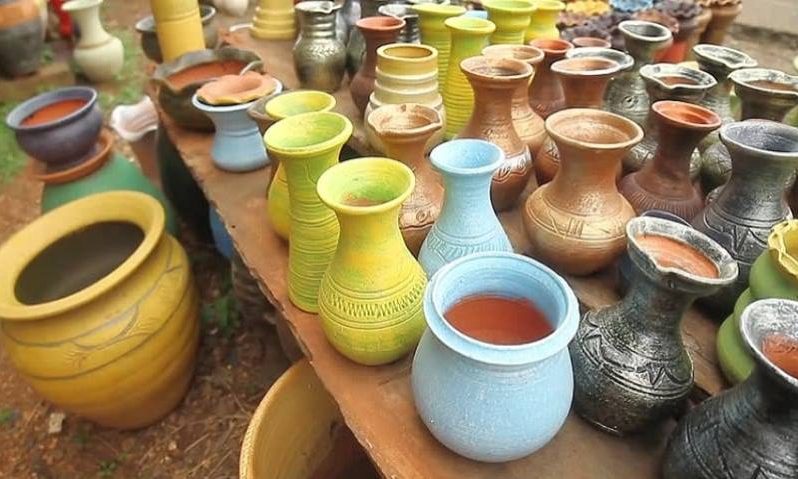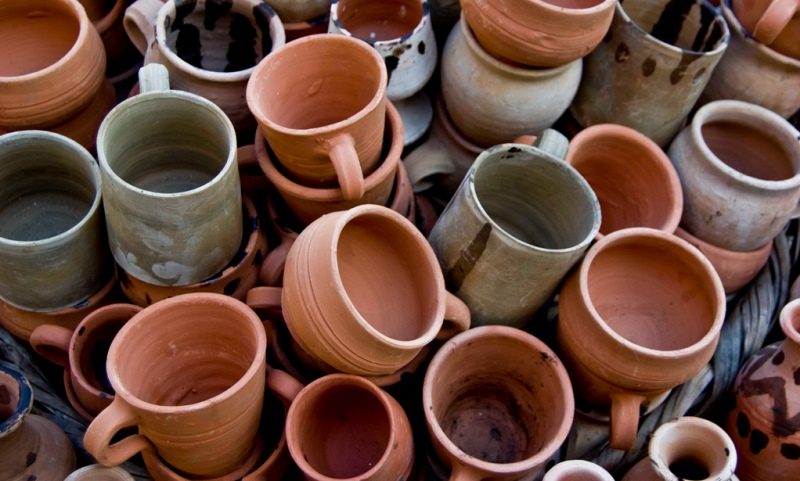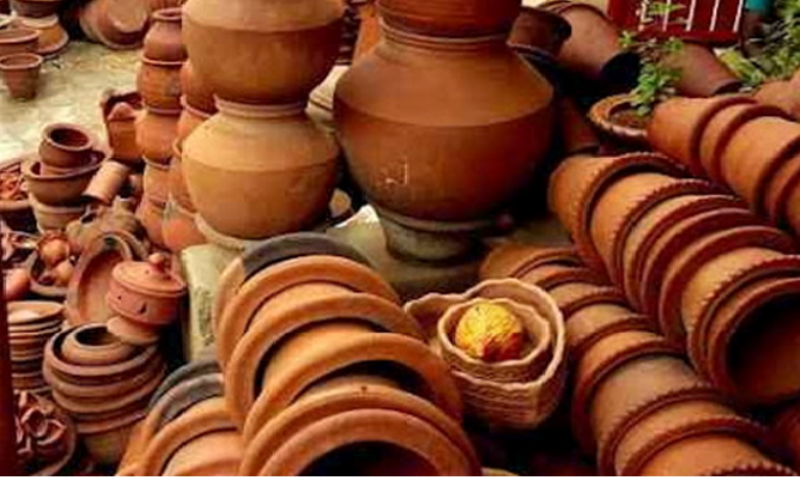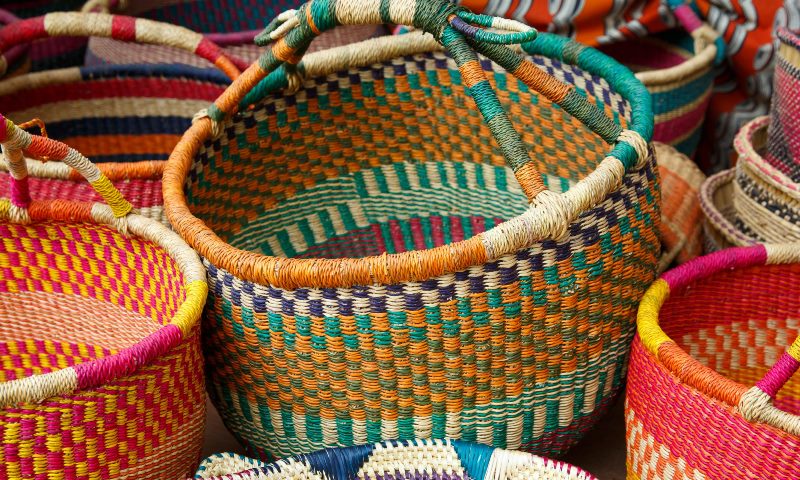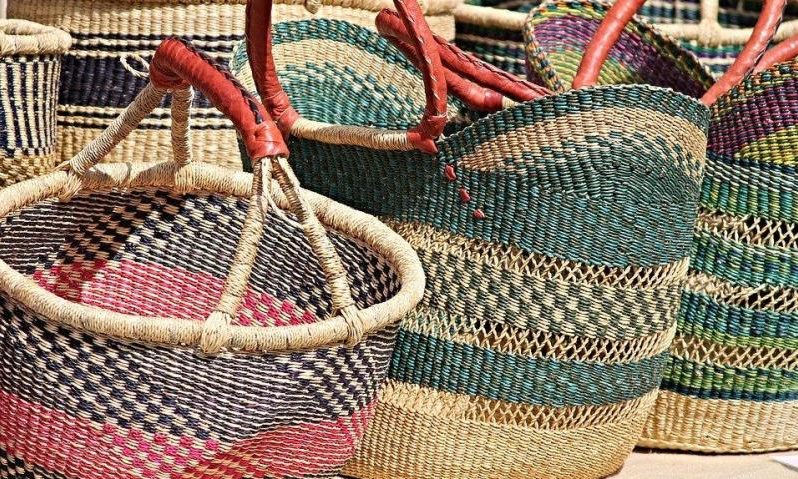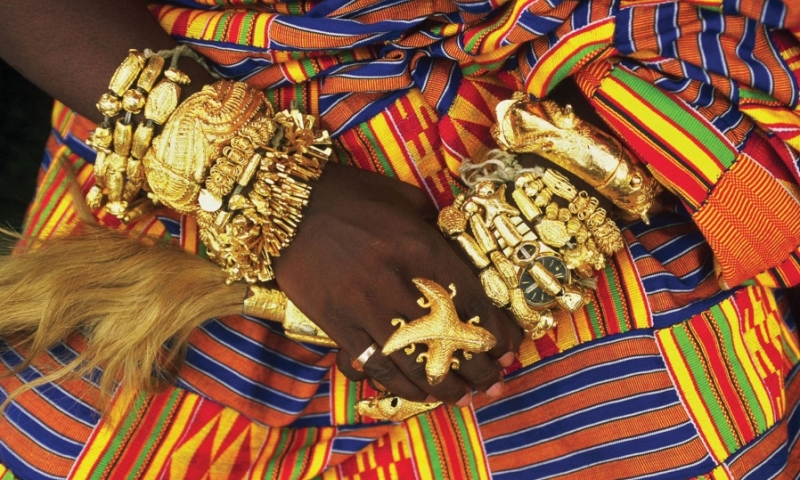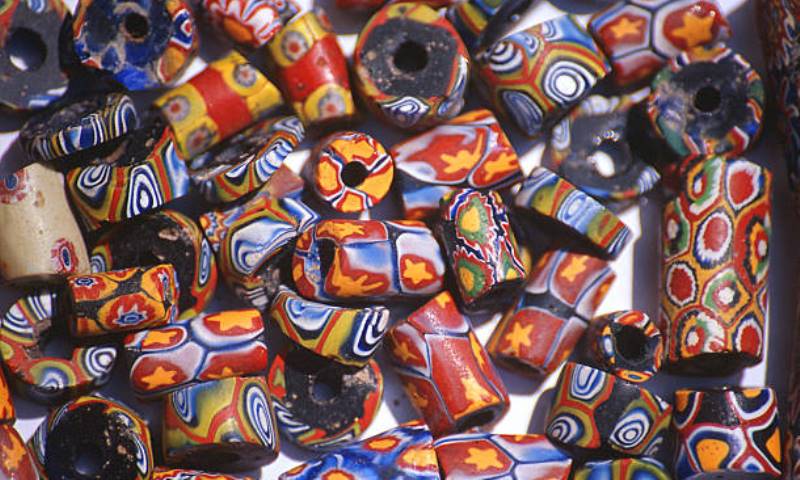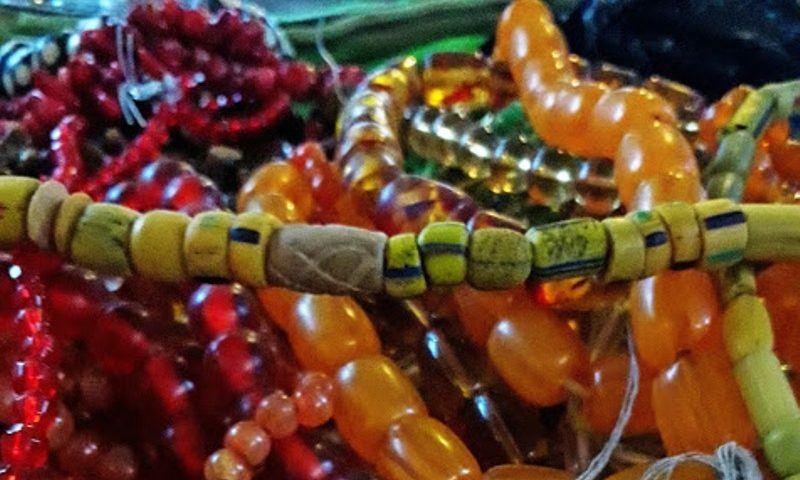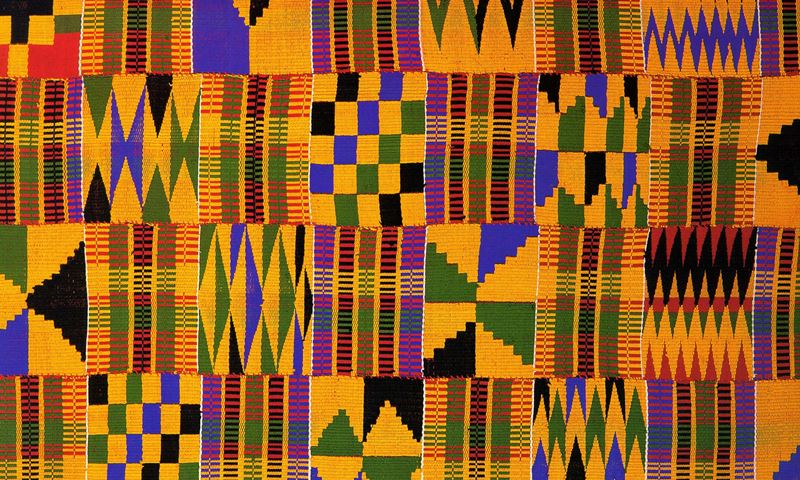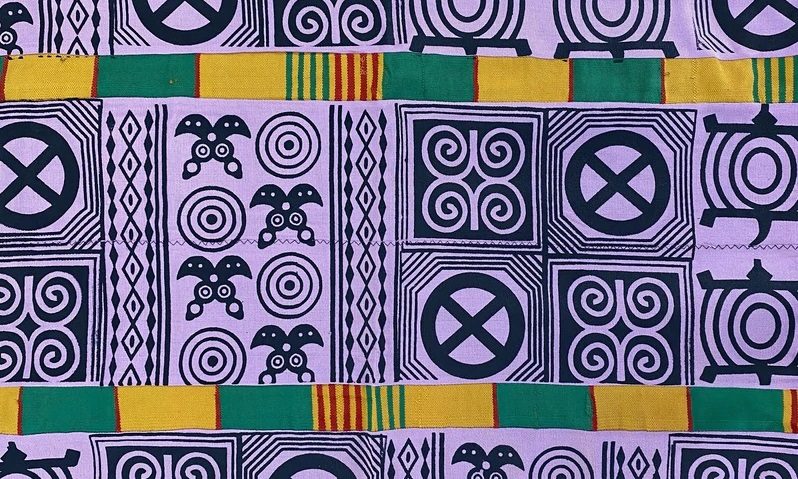Sculpture in Ghana refers to any of the creative forms in which three-dimensional art objects are created from materials such as stone, metal, wood, or clay.
The designs might take the form of standalone objects, reliefs on surfaces, or surroundings that range from tableaux to enveloping contexts. Some Ghanaian sculptors use volume and space to portray tradition, art, and culture.
In comparison to other art forms such as ceramics, textiles, or painting, sculpture is a major art form that impacts the work of most Ghanaian artists.
Traditional sculpture artworks are kept in Ghana by the Ghana Museums and Monuments Board (GMMB) in a number of locations in Ghana.
Pottery is one of the oldest human technologies and art forms, and it is still a significant industry in Ghana. In many parts of Ghana, pottery is the primary source of income for the people.
The material from which pottery ware is made is clay. The most common type is earthenware, also known as "Asanka or Ayewa". Abonko in the Central region, Tafo-Adompom, Pakrono, and all suburbs of Kumasi in the Ashanti region are among the major pottery-producing areas in Ghana.
Because of wars with the Ashantis, the people of Vume migrated from the Denkyira area in 1701, and it is said that they brought their pottery techniques with them. This would imply that the origins of traditional pottery in Vume date back centuries.
Pottery/ceramics can be found in other parts of Ghana.
Sources: thebftonline.com, greenviewsresidential.com
The baskets in Ghana, known internationally as Bolga baskets, are exclusively woven by the indigenous people of Bolgatanga, a historical town in Northern Ghana. Bolgatanga literally translates to "soft soil, rocky land." Bolgatanga, colloquially known as Bolga, is the capital of Ghana's Upper East Region, with a population of approximately 50,000 people. It is the main town between Tamale (161 kilometers to the south) and the Burkina Faso border (45 kilometers to the north). The border with Togo is about 30 kilometers to the east. It is also the primary settlement of the Frafra people. These authentic Bolga baskets are handwoven by the indigenous Gurune (also known as Frafra) people in the Bolgatanga region of Northern Ghana. Bolga is Northern Ghana's craft center. Weaving has been a traditional art of the people there for generation to generation.
Bolga baskets are made of elephant grass, also known as "Veta Vera" Grass. This untamed and adaptable grass is harvested in the forests surrounding Kumasi, 500 kilometers south of Bolgatanga. They are dried for a few days before being sold in regular length bundles. In general, basket making entails carefully weaving strands of fiber over and under each other to form a round shape. A simple coil basket begins with a thick piece of fiber that is shaped into a basic coil before being woven with a thinner, more flexible fiber. Wicker/cane baskets are trickier to master.
Bolga baskets were traditionally used as colanders or strainers to separate millet (a type of cereal crop) and water from millet waste. Today, buyers who appreciate the time and skill that goes into these colorful, hand-woven baskets are in high demand.
Aside from Bolga, basketry/baskets can be found in other towns in Ghana.
In Ghana, places, where baskets are exhibited or sold, are the cultural centers in a number of regions in Ghana. There are other private shops that also sell these.
Sources: dwellgh.com, basketsofafrica.com, franklinhobart.com.au, paradisefibers.com
Although Ghana exports the majority of its gold and other mineral resources, there are a number of individuals and businesses in Ghana that manufacture jewelry. Some of the materials used are from other countries.
There are new developments in the production of old aphorisms and symbols influenced by global culture. This is reflected in the use of brand names and logos, as well as the initials of customers' names, in the manufacture of jewelry in Ghana.
Jewelry can be found in Ghana at goldsmiths' workshops and showrooms, jewelry retail shops, festivals and durbars, and visits to the homes of chiefs and traditional rulers.
Sources: newsghana.com.gh, theartsjournal.org
Textile in Ghana ranges from the kente, adinkra traditional cloth, African prints, batiks or tie and dye, and the smock. The smock and kente cloth are said to be the national dress of Ghana. Kente cloth originated in the middle/southern region of Ghana. The smock is from the north of Ghana.
Kente (Akan: kente or nwetoma; Ewe: kete; Dagbani: Chinchini) is handwoven cloth, strips of silk and cotton. Historically the fabric was worn in a toga-like fashion by royalty among ethnic groups such as the Ashanti and Ewe. It is also worn by queens, princesses and women of Dagbon. Ghana now has only four textile factories that produce African prints.
Kente is usually worn during festivals like the Odwira and Hogbetsotso. It is worn on special occasions like weddings, national programs like the swearing-in of Presidents, durbars, and art and culture festivals.




